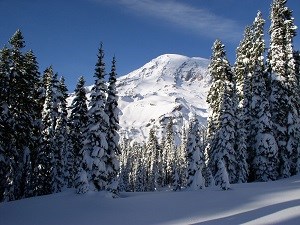
NPS/D Fairbanks The National Park Service celebrates its 100th anniversary on August 25, 2016, but the story of America's national parks starts a half century earlier. The conception of the park system parallels the evolution of the American ideal of equality of all people. In many places around the world, the locations of awe-inspiring natural wonders, the pristine wild lands full of curious creatures, and the shrines of local and national history had been held as the private possessions of the elite. But in America, the nation started early in its history making these places the property of everyone. When Congress established Yellowstone as the first national park in 1872, they proclaimed it "a public park or pleasuring-ground for the benefit and enjoyment of the people." This was the birth of "America's Greatest Idea." Follow the links below to read more of the story of America's National Parks and the organization founded to preserve and protect them "for the benefit and enjoyment of the people": the National Park Service. Brief history of the National Park Service Founding documents of the National ParksYellowstone Act of 1872 - Legislation that established Yellowstone National Park as the first national park – "That the tract of land in the Territories of Montana and Wyoming lying near the headwaters of the Yellowstone River . . . is hereby reserved and withdrawn from settlement, occupancy, or sale under the laws of the United States, and dedicated and set apart as a public park or pleasuring ground for the benefit and enjoyment of the people." Antiquities Act of 1906 - The Antiquities Act was one of the most important pieces of legislation in America's effort to conserve and preserve its cultural heritage. President Theodore Roosevelt signed the Act on June 8, 1906 to preserve America's archeological sites and artifacts from plunder and desecration. Read more about this vital piece of legislation at the link provided above. Organic Act of 1916 - President Woodrow Wilson signed legislation on August 25, 1916 establishing the National Park Service (NPS) as a bureau of the Department of the Interior. The legislation, known as the Organic Act, stated that the purpose of the new NPS was to "conserve the scenery and the natural and historic objects and the wild life therein and to provide for the enjoyment of the same in such manner and by such means as will leave them unimpaired for the enjoyment of future generations." Executive Order of 1933 - The original responsibility of the National Park Service grew significantly in 1933 when President Franklin Roosevelt signed an executive order giving total care of all "Federal parks" to the NPS. This included all national monuments, national cemeteries, battlefields, and most of the Federal buildings in the National Capital. 
Find your ParkThe duties and responsibilities of the NPS have continued to grow so that today there are more than 400 parks sites in the United States and its territories administered by the NPS. Find Your Park is an interactive tool to find those special places. Types of National Park Service UnitsWhat is the difference between a National Park and a National Monument? How about a National Reserve and a National Memorial? It's all confusing with more than 400 different units administered by the National Park Service. If you are curious or have been asked about the different types of units managed and protected by the National Park Service, then access this link to help solve the riddle. |
Last updated: January 27, 2025
